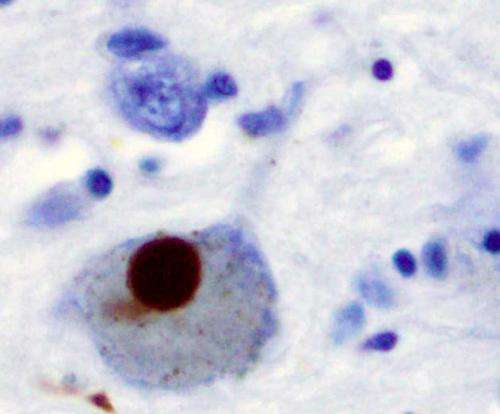Growth factors and Parkinson's disease—Where next?

Growth factors such as glial cell line-derived neurotrophic factor (GDNF) were initially thought to be exciting new treatments for Parkinson's disease (PD), but trials have been disappointing. A panel of prominent leaders in the field convened to discuss whether there is a future for this approach and what any future PD trial involving GDNF and other GDNF family neurotrophic factors should consider. Their discussions and recommendations are published in the Journal of Parkinson's Disease.
"There is clear evidence that GDNF and related growth factors can restore the dopaminergic nigrostriatal pathway in several animal models of PD," explained lead author Roger A. Barker, Ph.D., Cambridge Centre for Brain Repair, Department of Clinical Neuroscience and WT-MRC Cambridge Stem Cell Institute, Cambridge, UK. "However, this has yet to translate into a clinically meaningful and robust response in patients."
Growth factors support the development, growth, and survival of cells in the body and brain. The concept of repairing the brain with growth factors has been pursued for many years in a variety of neurodegenerative diseases including primarily PD. Their properties make them an exciting prospect for developing new treatments that could help repair the damage caused in PD.
An international group of experts met to discuss the history and current status of GDNF and related growth factor neurturin (NRTN) therapy for PD, comprehensively reviewing preclinical and clinical studies. Critical evaluation led to conclusions about what has been achieved and what has not been shown using these agents. It was generally agreed that GDNF and NRTN have worked relatively well in neurotoxic animal models of PD, but that their translation to the clinic has so far failed to show a major impact, perhaps highlighting the predictive limitations of toxin animal models being commonly used in the preclinical space in PD to look at disease modifying therapies.
"As to what any trial should look like, there is still much debate as to what primary end-point should be used and at what time point, and input from the patient community on this will be vital going forward," noted co-author Anders Bjorklund, MD, Ph.D., Wallenberg Neuroscience Center, Lund University, Lund, Sweden.
The workshop participants agreed that the question of whether GDNF has a competitive future in the treatment of PD is still unclear. They offered recommendations about what future trials with GDNF should consider and how they might be designed. For example, compared to the relative complexity of the neurosurgery needed to implant an infusion delivery system and ongoing infusions used in a recent GDNF trial, they felt a viral delivery system using newer modified approaches requiring less complex surgery would be more advantageous. In addition, they indicated that early stage PD patients would most likely benefit from such treatment because this group would have the most neurons and fibers left to rescue, with evidence of fiber loss restricted to the dorsal striatum, where the therapeutic agent could be targeted.
The workshop concluded that future trials with GDNF and related agents should be considered but that much more careful attention is needed to be given to all aspects, including the type of patient enrolled; the form of growth factor given; the dose and volume of agent given; the mode of delivery and length of follow-up along with optimal assessment tools.
More information: Roger A. Barker et al, GDNF and Parkinson's Disease: Where Next? A Summary from a Recent Workshop, Journal of Parkinson's Disease (2020). DOI: 10.3233/JPD-202004



















